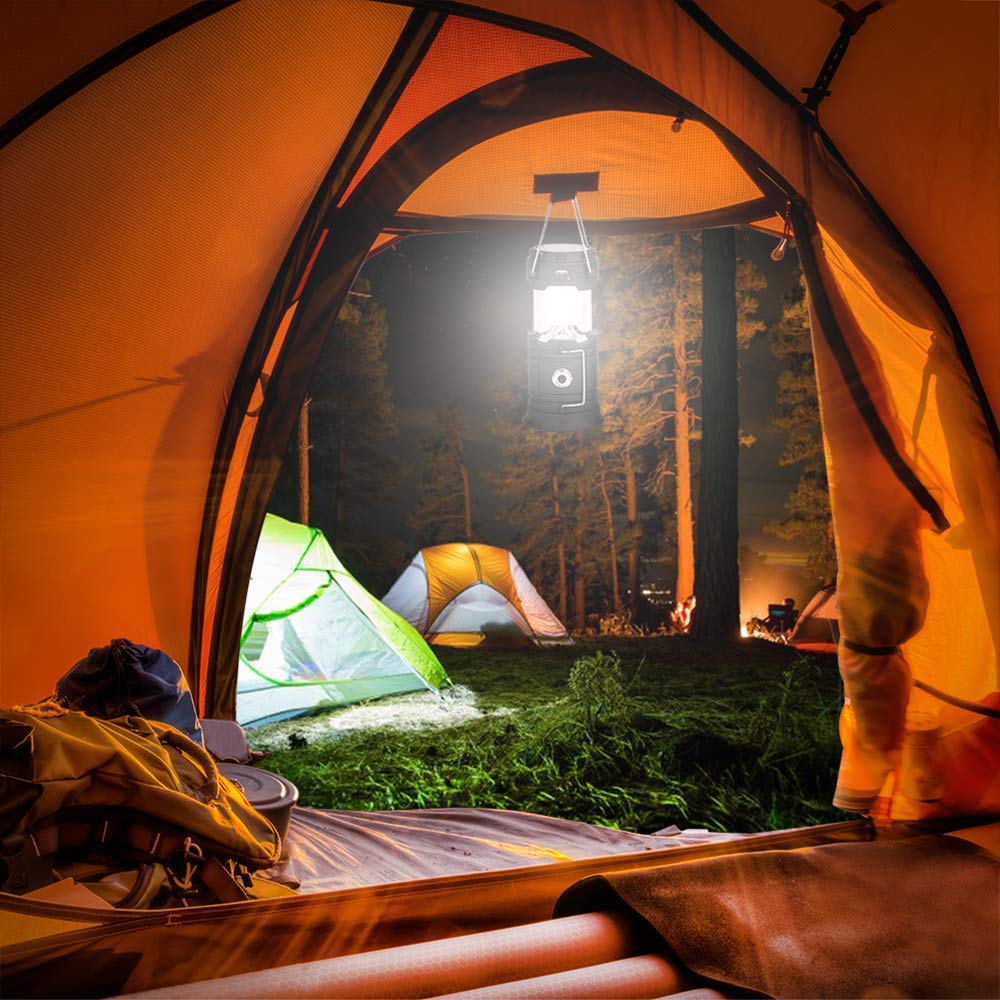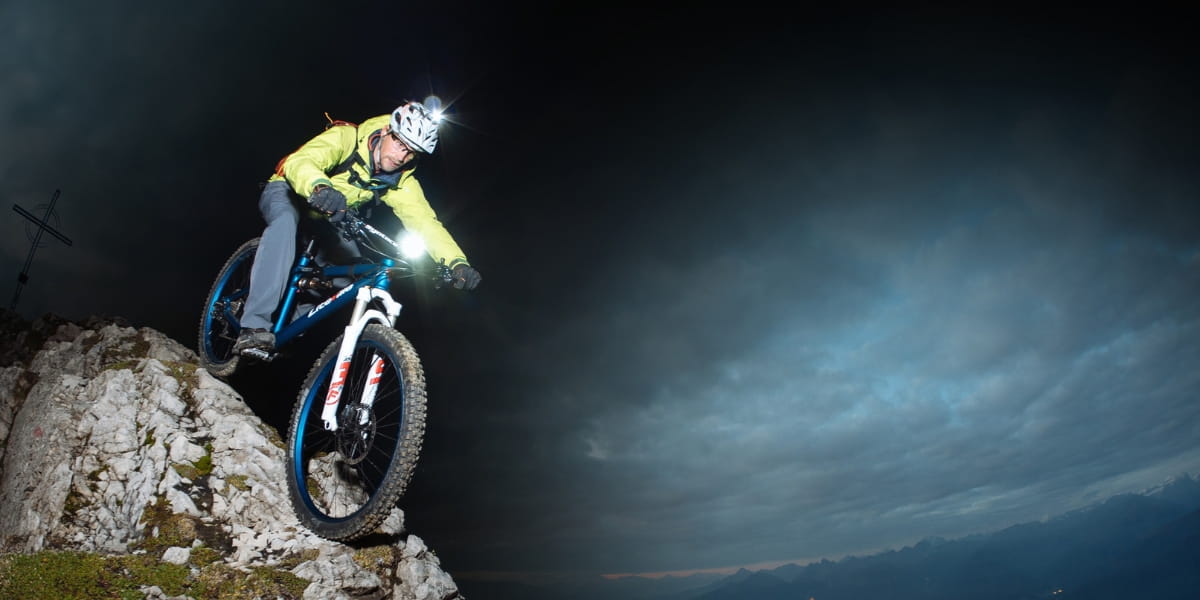


Whether you opt for economical models offering basic functionality or high-end, performance-oriented models. A headlamp is an essential piece of equipment for any sportsman or traveller.
Increased visibility: The main function of a headlamp is to light the way ahead, to help you navigate and avoid obstacles. Some lamps also provide visibility for motorists on poorly lit or unprotected roads.
Comfort and Ergonomics: Most headlamps are mounted on an adjustable elastic headband. For the less lightweight, an additional strap will stabilize the whole, sometimes complemented by a strap running from the forehead to the back of the head. With the right configuration and once properly adjusted, it will stay in place even during the race. So it’s essential to try out different models before you buy, as the weight and shape of some lamps may not suit your cranial anatomy.
Ease of use: Another crucial ergonomic aspect to consider before purchasing is the ease of selecting lighting modes without having to remove the headlamp. Many models feature a single button to control all functions. This requires a certain familiarity with the different types of short, long and successive supports.
So, in this LEPAPE guide to headlamps, we’ll guide you through a multitude of options. So you can choose the one that best suits your practice.
LED lighting has become the standard in the world of headlamps. Highly appreciated for its shock resistance, long life and remarkable energy efficiency.
There are two main categories of LEDs to consider:
It’s important to note that not all LED lighting is created equal. Particularly with regard to their potential impact on eye health. Light-emitting diodes emit a certain amount of blue light, exposure to which can be harmful to the eyes, particularly at close range.
To better understand the risks, three levels have been established. Each level is associated with the distance between the light source and the eye. Group 0 LED headlamps are risk-free. The risk is considered low for group 1, moderate for group 2, and high for group 3, even for momentary use.
Headlamps are characterized by their luminous intensity, expressed in lumens. It’s important to understand that this value represents the lamp’s maximum power when the batteries are new or full, and this intensity may decrease over time.
Headlamps offer two types of illumination. A wide but short-range beam, covering around ten meters, and a narrow but long-range beam, extending from 30 to 100 meters.
The wide beam is particularly useful when racing over unfamiliar terrain, although it can’t predict the twists and turns of the course in advance.
Whereas a focused beam is more effective for distinguishing distant elements.
Fortunately, many of today’s models offer both wide and focused beams. This makes them versatile for a variety of activities.
Battery-powered headlamps offer a significant advantage. The ability to recharge the lamp as soon as it is discharged.
This eliminates concerns about the lack of spare batteries, making it a wise choice for those who primarily use the headlamp during twilight runs or prolonged nocturnal activities. Models with rechargeable lithium-ion batteries are particularly suitable for this purpose.
As well as being practical, they’re environmentally friendly, and thanks to their USB port, they’re easy to recharge. This guarantees a reliable source of energy for your outdoor sporting adventures.
Battery-powered headlamps also offer significant advantages. Some of them offer impressive autonomy of up to 200 hours, ensuring many a peaceful night out. What’s more, for the same size, batteries generally last about twice as long as rechargeable batteries, which makes them a real bargain.
What’s more, the choice between alkaline and lithium batteries is crucial when you opt for replaceable batteries. For outdoor use, we strongly recommend lithium batteries, because of their light weight, longer life and greater resistance to cold.
And don’t forget to recycle these batteries properly, as this helps preserve the environment while ensuring a reliable source of power for your outdoor adventures.
They combine battery operation with the ability to use batteries when the battery is discharged. Providing a dual power source. This flexibility is particularly useful in situations where lamp life is crucial and a back-up power source is required.
What’s more, some headlamp models go even further by offering remote batteries. These batteries can be located on the back of the user’s head, or even, more rarely, on the hips.
This feature is generally incorporated into lamps with heavier and/or larger batteries. It distributes the battery’s weight more evenly, improving user comfort over long periods of use.
Although this configuration is not very widespread, it is highly appreciated by people who need a powerful, constant source of energy for prolonged outdoor activities.
Traditional headlamps lose light intensity in proportion to battery discharge. Their maximum brightness is only reached with new batteries, and they retain their maximum brightness regardless of battery charge.
However, top-of-the-range models incorporate control functions that maintain constant lighting up to a certain threshold. Beyond which brightness drops sharply, ensuring minimal lighting for a few minutes/hours to change the batteries.
These lamps offer dedicated modes to combine efficiency and energy savings. Constant Lighting” mode maintains a constant light output over time, but at the expense of autonomy, lighting for four times less time than a lamp in conventional mode.
Modern headlamps offer a wide range of lighting modes to meet the specific needs of sports fans and outdoor enthusiasts.
An innovative approach, known as “Reactive Lighting”, is distinguished by the use of a light sensor that automatically adjusts light intensity according to lighting conditions and your field of vision.
When you gaze far into a dark environment, the light intensity increases to illuminate your path. On the other hand, when you lower your head or direct your gaze towards nearby objects, the luminous flux decreases to save energy.
The headlamp’s water resistance is an essential factor to consider. Headlamps vary in terms of waterproofing, as measured by the IPX standard. Most models are between IPX4 and IPX6.
IP ratings combine resistance to dust and water. The most waterproof lamps are generally rated IPX7, which means they can withstand immersion to a depth of one meter for 30 minutes.
Ideally, opt for a headlamp with a protection rating between IPX4 and IPX7, to cope with the unforeseen conditions and inclement weather common in the mountains.
Most headlamps offer a variety of lighting modes. This means they can be easily adjusted by pressing the ignition button until the desired mode is reached.
The two main modes available are flood mode, which provides broad illumination, and spot or focus mode, which concentrates the light. This makes the headlamp incredibly versatile.
Other lighting modes that may be particularly suitable for your activity are :
Une lampe frontale puissante est essentielle pour éclairer suffisamment loin et anticiper les obstacles lors de la course à pied, en particulier sur des terrains rapides. Lors de vos sorties de course à pied, choisissez une lampe frontale de 150 à 200 lumens. Si vous préférez les sentiers hors route, optez pour une lampe frontale trail plus puissante, avec au moins 200 lumens. Assurez-vous d'utiliser un mode d'éclairage fort pour les environnements sombres et un mode clignotant pour améliorer votre visibilité. Si vous courez en groupe, privilégiez une lampe frontale avec une lumière rouge pour éviter d'éblouir les autres participants.
Découvrez nos modèles running
Pour vous évader en montagne en randonnée, une lampe frontale de 100 à 150 lumens est suffisante. Une bonne lampe frontale de randonnée doit, en effet, vous apporter un éclairage d’environ 50 mètres et une autonomie de plusieurs heures. Toutefois, si vous prévoyez de parcourir des terrains escarpés en pleine nuit, il peut être judicieux de choisir une lampe frontale plus puissante. Offrant de 160 à 290 lumens. Elle vous permettra d'éclairer jusqu'à environ 100 mètres devant vous et vous aidera à distinguer clairement tous les obstacles sur votre chemin.
La lanterne de camping est un accessoire inestimable pour toute aventure en plein air, en particulier lors du bivouac. Elle apporte la possibilité d'éclairer une zone entière sans avoir à pointer la lumière dans une direction spécifique. De plus, que vous choisissiez de la suspendre dans votre tente, de la poser sur une table de camping ou de l'accrocher à une branche d'arbre, elle offre une polyvalence d'éclairage qui rend votre expérience de camping beaucoup plus agréable.
Découvrez nos lanternesL'éclairage sur un vélo représente sans doute l'aspect le plus essentiel pour garantir une pratique sécuritaire du cyclisme. Que vous rouliez sur un vélo de route, un VTT, ou que vous soyez un cycliste urbain pressé. Son importance ne se limite pas à vous rendre visible, mais également à vous permettre de voir clairement la route, surtout à des vitesses plus élevées. Nous vous conseillons d'utiliser une intensité lumineuse entre 100 et 400 lumens lorsque vous évoluez dans un environnement bien éclairé. En revanche, dans un environnement non éclairé, nous vous recommandons d'opter pour un éclairage de 400 lumens.
Découvrez nos kits d'éclairages
Lorsque l'on s'aventure dans des environnements exigeants et périlleux comme l'alpinisme, il est impératif d'avoir un éclairage de grande puissance spécialement conçu pour les conditions en haute montagne. Il est donc indispensable d'opter pour une intensité lumineuse comprise entre 300 et 900 lumens. De plus, il est essentiel de prendre en compte la légèreté de l'équipement. Les modèles polyvalents sont généralement conçus pour être légers, pesant entre 60 et 80 grammes, tandis que les modèles spécialisés peuvent varier de 175 à 300 grammes. Enfin, il est nécessaire de veiller à une certaine résistance au froid pour garantir que l'autonomie de l'éclairage ne soit pas considérablement réduite en cas de températures extérieures très basses.
The information below is required for social login
Sign In
Or
Create New Account
Or
Your data is processed and collected by Lepape, which acts as the data controller, in accordance with the French Data Protection Act and the RGPD. For more information on the processing of your personal data, you can consult our Privacy policy.